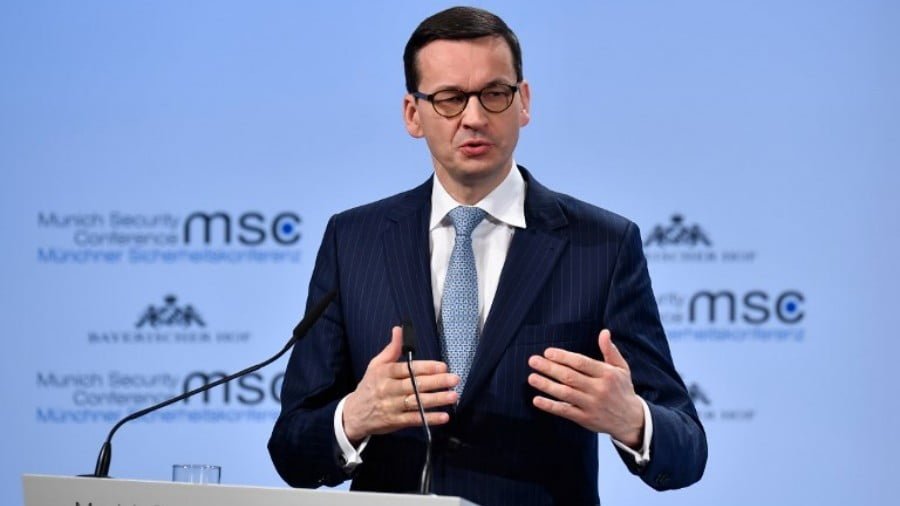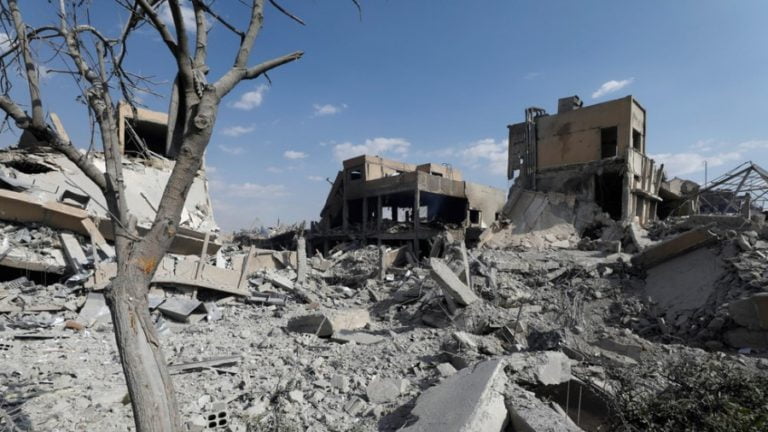Is Social Media like a Weapon of Mass Destruction?
A few days ago John Hyten, the Vice Chairman of the Joint Chiefs of Staff, declared that a cyber attack that has “a significant impact” on the United States or “significantly affects the world” can be “defined as a weapons of mass destruction”. And that is why Hyten emphasized that “a large-scale attack launched from cyber space can be viewed as” a WMD.
However, is it only a “large-scale cyber attack” – out of the many types of information warfare used nowadays – that can be categorized as a WMD?
At humankind’s current stage in history, huge stockpiles of various weaponry have been amassed that are capable of destroying all life on Earth many times over. Despite the wide variety of weaponry, they all have a destructive effect, chiefly on human forces and various facilities, and use various forms of energy as the foundation of the weapons’ effect. That is why it has become common practice to divide up all the equipment used in armed combat, including WMDs, into four groups broken down by the type of effect that is used to destroy human forces and facilities: physical, chemical, biological, and information weapons. To decrease the risk of this kind of weapon being used, to give newly developed weapons a more “humane” look by increasing the selectivity of the targets destroyed, and to reduce collateral damage to untargeted facilities and the environment, people are more frequently putting forth concerted efforts to reduce their reserves of weaponry, and developing non-lethal weapons and other means of exerting an impact on adversaries without resorting to the large-scale mobilization of military force. Over the past few years, the means to wage information warfare have been pointed to more frequently as part of them.
For its part, information warfare can be divided up into two types: technical and psychological information warfare. The main facilities that are targets, and need to be protected from, the former are technical information systems (communication systems, telecommunication systems, radar equipment, etc.) using mathematical software tools (viruses, special programs, jamming communications, etc.)
When psychological information warfare is waged, its targets are the psyches of personnel in the Armed Forces, intelligence services, and populations on the opposing sides, and the systems that form public opinion and underpins the decision-making process. With this, most often “traditional” methods are used as an active tool to influence people’s sentiments, feelings, opinions, and how they assess events that occur. Specifically, this means disinformation, mixing truthful and false information, and highlighting the positive aspects of a certain problem while understating the negative ones. However, “nontraditional” information technologies are used that have a highly potent impact on the mass psyche, and in particular psychotropic weapons.
In terms of the nature of their destructive power, information weapons are certainly unmatched, since they are capable of achieving wartime objectives owing to how they transform people’s behavior and consciousness in ways the attacking side needs, while leaving tangible assets, people, and the environment intact.
There is no doubt that an information weapon can be particularly effective against a country where there is social tension or interethnic, religious, or class conflict. If that does not exist in the country that is under attack, then it is created artificially using the technologies that have already been developed by the West in recent years. In that case, information weapons can cause panic, mass unrest, and massacres in a short time period, destabilize the political situation, and ultimately force a country to capitulate to an aggressor without the widespread use of destructive weapons.
Given what characterizes the destruction caused by information weapons, which fundamentally differs from all other WMDs, and the scale across which it can be employed, it has recently become preferable to all other forms of existing and hypothetical WMDs.
For a long time, television and media outlets were the most powerful levers to exert information-driven influence on people’s consciousness. Unfortunately, very often they are used to “turn off people’s brains” and zombify the population, because it is much easier to control people who have lost the habit of thinking independently. Therefore, Western propaganda is actively using these information tools to implement a policy of McCarthyism and incite Russophobia, and nowadays Sinophobia, Islamophobia, and Iranophobia.
Over the past few decades, owing to the widespread use of the Internet and round-the-clock access to social media networks, including via smartphones, using social media in information warfare is precisely where information weapons are honed until they are as sharp as a razor blade. One result of this is represented by the “color revolutions” instigated by the US and its allies around the world, and whipping up political instability and explosive social tension in countries that are adversaries for Washington. And there are too many specific examples of that, from the so-called “Arab Spring” and “Ukrainian Maidan” to recent attempts made by Washington to overthrow undesirable regimes in Venezuela and Belarus, and influence the election processes in Georgia, Moldova, and other countries, and not only in the former Soviet Union.
The conference held on August 13-16, 2017 in St. Louis (Missouri) by the US Defense Intelligence Agency (DIA) entitled “Department of Defense Intelligence Information System (DoDIIS) Worldwide” (“Wireless communications, video conferencing, and managing the development of computer technologies”) served as confirmation that Washington is actively using these weapons as of late. During the work done there, General Vincent Stewart said that the US is preparing for fifth-generation warfare. Specifically, he stated: “All too often we find ourselves fighting warfare in the ways that are not purely kinetic. As opposed to specific platforms like the F-35 Joint Strike Fighter, fifth-generation war is about the fight for information.” That is why it is not surprising that for Washington the means of communication have become, as the renowned theorist Brzezinski said, “the main instrument in global domination”.
Nowadays, social media intensively captures the minds and governs the actions of millions of the Earth’s inhabitants in various countries. Through social media networks, the absolute majority of which are American in origin, information, or rather propaganda, is “tossed in” that is of interest to the United States. As instructed by the US ruling political elite, information that passes through social media is being censored. Twitter and Facebook block access to social media for alternative information resources that criticize the current US government, and in particular that is happening now, with the content in the publication New Eastern Outlook getting blocked on many American social media. These same social media networks, which artificially inflate Russophobic and Sinophobic accusatory rhetoric, seek to actively influence the electoral processes in many countries of the world themselves, including the United States, and when the Democrats insisted they blocked tweets made by Republican Donald Trump.
There cannot be any doubt that the information space today plays a role in people’s lives that is growing in significance, and has an influence on many facets of our lives and the activities that we perform. In addition, the US is actively trying to use the potential inherent in information space for its own specific purposes, and especially the social media.
However, it should not be forgotten that even though the US invented the nuclear weapon, it could not hold a monopoly on it. And that will definitely occur with social media networks. And the recent strategic war between Washington and Beijing over the social media TikTok and WeChat is vivid proof of this.







